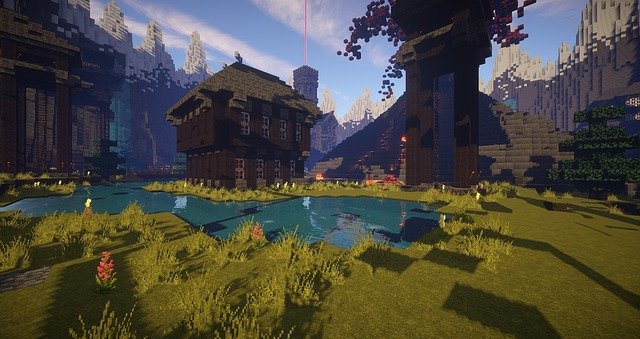When Kermit the Frog first sang “it’s not easy being green”, it’s unlikely that he was referring to the NES version of Teenage Mutant Ninja Turtles.
In Kermit’s defence, his song was released 19 years before the game. Still, even if it wasn’t explicitly aimed at Konami’s 1989 platformer (and it definitely wasn’t), the sentiment rings true regardless – TMNT on the NES was extremely hard.
The Cowabunga Collection, the latest old-school compilation from the retro specialists at Digital Eclipse, has an interesting mode that proves that while the game may be extremely difficult, it isn’t unbeatable.
As seen in a handful of other Digital Eclipse titles, the Watch mode plays the game for you so you can study the techniques required to complete each stage.
And when we say it “plays the game for you” we literally mean it – this isn’t just a YouTube video being played back to you, it’s a pre-recorded set of button commands being carried out in real time, the video game equivalent of a self-playing piano.
Because it’s playing the actual game, it also allows for a brilliant twist in that at any point you can press a button and take over the action. It’s like having a virtual older sibling who gets past the tricky bit before handing you the controller.
Thankfully, most of the other games in the Cowabunga Collection aren’t quite as hard as that first NES affair, which is well-known for its difficulty (or at least these days it is – back then it was just one of many challenging NES games).
Most of the other console games included are manageable, and while the two arcade games which are included are typical early ‘90s coin-op cheap-fests designed to make the player die regularly, but the ability to add coins at will allows players to brute force their way through them.
The full list of 13 games included in the compilation, in chronological order, is as follows:
- TMNT (NES)
- TMNT (Arcade)
- TMNT II: The Arcade Game (NES)
- TMNT: Fall of the Foot Clan (Game Boy)
- TMNT: Turtles in Time (Arcade)
- TMNT II: Back from the Sewers (Game Boy)
- TMNT III: The Manhattan Project (NES)
- TMNT IV: Turtles in Time (SNES)
- TMNT: The Hyperstone Heist (Mega Drive / Genesis)
- TMNT III: Radical Rescue (Game Boy)
- TMNT Tournament Fighters (SNES)
- TMNT Tournament Fighters (Mega Drive / Genesis)
- TMNT Tournament Fighters (NES)
Long story short, it’s every console and handheld Konami TMNT game released in the 8-bit and 16-bit eras, all in one package.
While each game can obviously be played in their original untouched forms, each also has their own bespoke set of enhancements that players can toggle on or off to change the experience slightly.
Depending on the game, these enhancements can be extensive or basic. The first NES game only lets you fix the slowdown and sprite flickering that plagued the original, making the game look a lot more stable.
Other games, however, let you turn on ‘god mode’ for invincibility, or add other quality of life features that make sprinting easy, give extra lives or what have you.
These extras aside, the emulation is what you would expect from a modern retro title, especially one handled by Digital Eclipse. All 13 games play without major issue, with a handful of scanline filters and screen resizing options, while the typical rewind and quicksave functions are present and accounted for.
It wouldn’t be a Digital Eclipse game without some sort of bonus behind-the-scenes content, and the Turtles’ Lair section features 3,741 images, covering not just the games but other TMNT media.
“It wouldn’t be a Digital Eclipse game without some sort of bonus behind-the-scenes content, and the Turtles’ Lair section features 3,741 images, covering not just the games but other TMNT media.”
Scans of the full North American and Japanese manuals for every game are included, as are magazine ads and box art. There’s also a full gallery of TMNT comic covers, and galleries for the animated shows (though the latter just consists of a few screen grabs for each episode – we’d have loved a plot synopsis for each).
Digital Eclipse has even created its own digital strategy guide for the series, written in the style of a ’90s strategy guide with lots of cheesy jokes. It’s a wonderfully endearing sign that this is very much a passion project.
Best of the bunch, however, is the gallery of design documents for the games, complete with loads of character art and developer notes. Because Konami developed these games, the notes are all in Japanese, but a button press can bring up a full translation, which is a fantastic touch.
There’s room for improvement, though, and as much as we appreciate the effort that Digital Eclipse always puts into its retro compilations – the studio could never be accused of just dumping a bunch of ROMs into a package and letting them speak for themselves – there are a few things we’d have loved to see.
Some sort of video content would have been great, be that developer interviews or just a general look at the TMNT phenomenon as a whole. Given that the comics and TV shows are represented in the gallery, we’d have loved a timeline breaking down the history of the IP.
Digital Eclipse has gone down this route once or twice in the past (and is planning to do so on an even bigger scale with its upcoming Atari 50 compilation), and it’s always been fascinating. Its SNK 40th Anniversary Collection remains the studio’s best work in that regard, a masterclass in how to place a compilation’s games in historical context.
It also has to be said that although the TMNT games generally tended to be the exception to the rule that licensed tie-in games aren’t usually that good, there are still one or two here that haven’t aged too well.
“Although the TMNT games generally tended to be the exception to the rule that licensed tie-in games aren’t usually that good, there are still one or two here that haven’t aged too well.”
The NES port of the arcade game is the worst of the bunch, with clunky and repetitive gameplay, and the Mega Drive version of TMNT Tournament Fighters – all three versions are completely different games – leaves a lot to be desired.
The original NES game, meanwhile, will no doubt be a highlight for those old enough to remember it at the time, but for younger generations it’s only going to be a frustrating experience.
On the other side of the shell, though, the SNES version of Turtles in Time remains an all-time classic to this day and one of the greatest beat ‘em ups ever made – the fact that the recent retro–inspired title Shredder’s Revenge borrows so much from it speaks volumes.
The third Game Boy title, Radical Rescue, is also an absolute hidden gem, offering a legitimately brilliant Metroidvania game. There’s also a new option to modernise it slightly by adding key icons to the in-game map, making progress easier. Of all the games in the collection, this will be the one that surprises most players.
Some will argue – perhaps unrealistically – that the collection should have extended to include Konami’s second wave of TMNT games from the PS2 era, but the porting of such (comparatively) complex titles to numerous modern systems feels like a level of effort best suited to a separate remaster collection, should there ever be an appetite for that.
Ultimately, it goes without saying that the people this will appeal to most are players who grew up in the late ’80s and early ’90s with the Teenage Mutant Ninja Turtles (not Hero Turtles – there are no PAL versions here) and fancy 13 nostalgia kicks.
Some of the magazine ads in the gallery section have redacted game art, which looks suspicious but is just down to licensing reasons. The original version of this ad, for example, included a Tiny Toon Adventures game
Players who don’t have that emotional tie with the IP may get less out of it, and while the bonus image galleries are undoubtedly a goldmine for established fans, they do little to place the series in context for those who are experiencing these games for the first time and may be looking for a history lesson.
While the sheer number of images provided is fantastic and the design documents are an absolute treat, it does sometimes feel like looking through someone’s scrapbook rather than visiting a museum – it still makes for fascinating viewing, but we’d have liked even more written content accompanying it and pointing out the backstory of some of the things we’re looking at.
The main exception to this is the section on magazine ads, which provides optional captions giving commentary on each advert and the context it was shown in. These are exactly what we’re looking for – these are tremendous and we would have loved to have seen even more of that, especially in the behind-the-scenes section with the design documents.
That said, as far as retro compilations go, The Cowabunga Collection is still on the higher end of the tier when it comes to how the games themselves are handled, and people who already know what to expect from the titles on offer will have a ball reliving them, especially if they get some friends over (and order some pizza, naturally) to play the arcade games and Turtles in Time in co-op.
Source: https://www.videogameschronicle.com/review/tmnt-the-cowabunga-collection/



